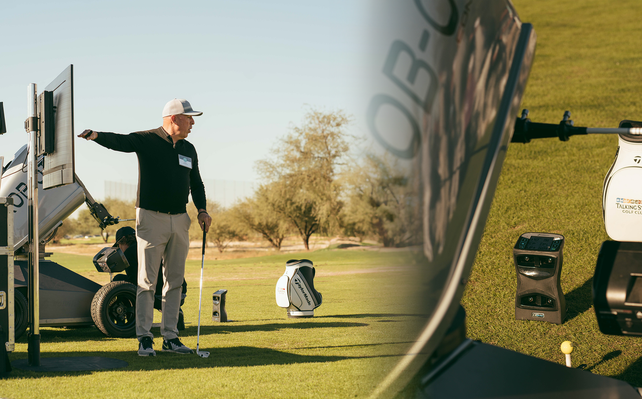How to Optimize Driver Carry Distance Based on Swing Speed
Jul 24, 2024
As your golf swing changes, launch conditions change accordingly and require new focus, whether through equipment tweaks or technique. Junior golfers have the most rapid changes in their swings and swing speeds due to physical growth and fast improvement potential, so it’s critical to understand the impact to launch conditions.
Golf Laboratories, the leading independent robotic testing company, has conducted testing and research of Foresight Sports data for our UpNext Junior Development Program to compile suggested launch parameters to optimize driver distance based on swing speed.
Before the data, here are a few important tips:
- The first step is to determine your club head speed. Once that’s established, examine and experiment with your angle of attack and swing path to produce the ideal launch angle and backspin rate to maximize distance.
- Attack Angle is the angle at which the club contacts the ball. If the clubhead is moving down to the ball at the point of impact, as is typical with an iron swing, that is indicative of a negative angle of attack. If the club is moving up toward the ball at the point of impact, that indicates a positive angle of attack.
- For most players, especially newer golfers, optimized driver distance comes from a positive angle of attack, (also known as hitting up on the ball.)
- Club head speed and angle of attack, contribute to the launch angle and backspin, which influence distance.
- Golf Laboratories tested club head speeds from 60 mph to 100 mph at different angles of attack to determine the optimal launch and spin for each speed and angle. Below are the highlights of their data.
Click to enlarge
*An important note is that every golfer and golf situation is different, and these conditions are guideposts for you to investigate what works best for your game.
Key Takeaways:
- Lower swing speeds require higher launch angles for greater distance.
- Higher swing speeds typically require a lower launch angle for distance optimization.
- A negative angle of attack launches lower and spins more than a positive angle of attack, usually decreasing potential distance.
With this data from Golf Laboratories, UpNext members have a reference for how to understand driver conditions and work to optimize them based on swing speed.
When you're at the range or tee box, use your GC3 or GCQuad to see if you’re on par with the numbers from Golf Laboratories.
Share your launch conditions on social media and let us know how they stack up!









































